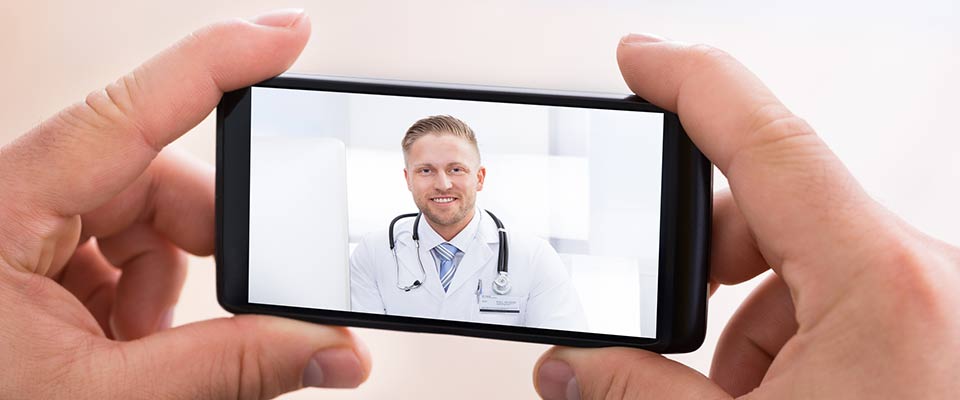Back in the day, say, the 1940s, house calls — where a doctor would come to the patient’s home — used to comprise about forty percent of U.S. doctors’ visits. Instead of patients exclusively visiting doctors, doctors would also visit patients.
Over time this trend reversed, and house calls went out of style. Today they account for less than one percent of all doctors’ visits.
But the saying “There is no new thing under the sun,” may be true after all — when it comes to doctor visits at least. Believe it or not, house calls are making a comeback . . . albeit, in the form of virtual visits.
Is this really a thing?
If a virtual visit sounds ridiculous, that’s not surprising. Although over 90 percent of employers offer telehealth as an employee benefit, only about 3 percent of employees use it. Eight out of ten people haven’t even heard of it.
But at a time where an estimated 65 million Americans live in areas where primary care doctors can only meet about half their needs, and just 10 percent of physicians practice in rural areas, telehealth is growing into a convenient (and sometimes necessary) means of getting care.
And if you think telehealth is only useful for treating routine symptoms like sniffling and sneezing, think again. To be clear, it isn’t meant to treat emergencies or accidents where you need immediate help. But virtual visits can help with all kinds of medical issues, including:
- Colds, allergies, and the flu
- Ear, nose, and throat issues
- High blood pressure or cholesterol
- Stress management, anxiety, and depression
- Post-surgery and follow-up appointments
Additionally, you can receive advice about medications, or whether or not you should visit urgent care or the emergency room to treat your symptoms.
What about cost savings?
Because you aren’t visiting a facility, telehealth appointments cost much less than in-office appointments. The Wall Street Journal reports that non-emergency medical appointments generally cost about $45, compared to $100 for in-office visits. If you factor in drive time (and in some cases, parking costs) plus time lost from work, the savings are even higher.
But telehealth shouldn’t replace your primary care doctor
Remember, you should use telehealth in addition to your primary care doctor. Not instead of.
Why? Because your primary care doctor is the main point-of-contact for your full care team, like dermatologists or other specialists. That means they’ll have access to information spanning your entire health history. A virtual doc won’t.
But it’s still a valuable way to get care when you need it, without leaving your home or work. Heck, you can even use it while traveling!




